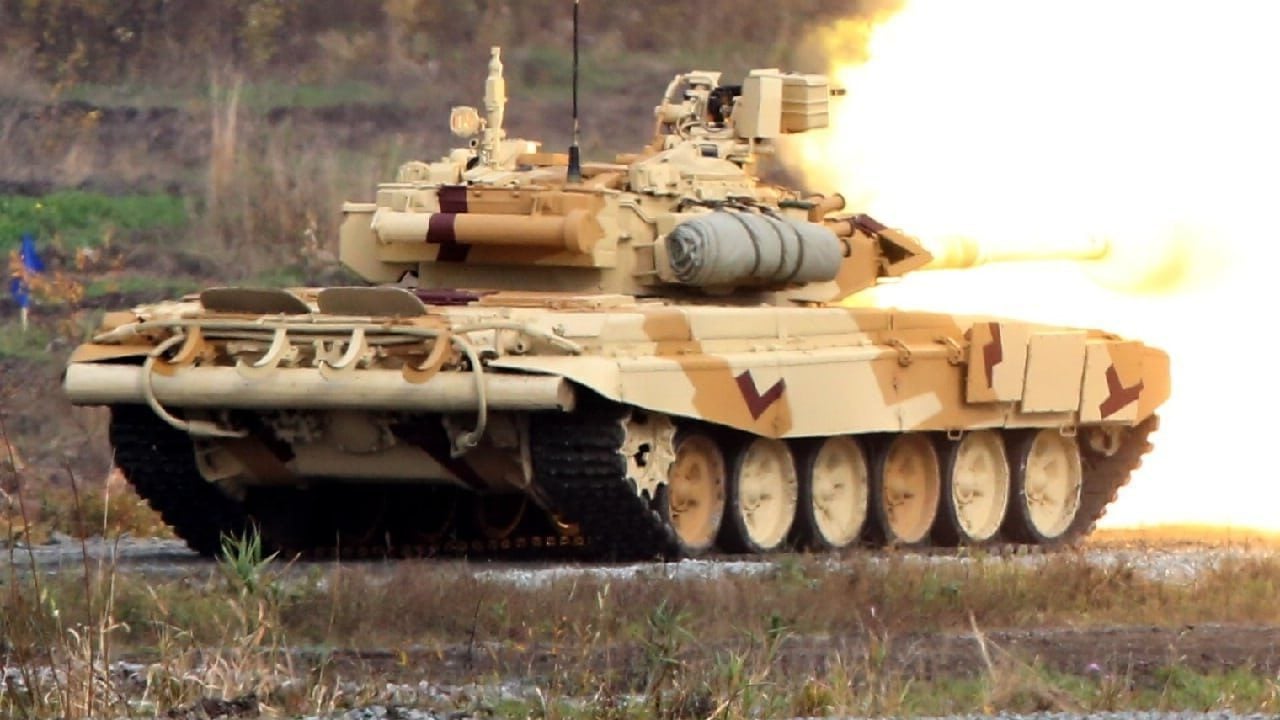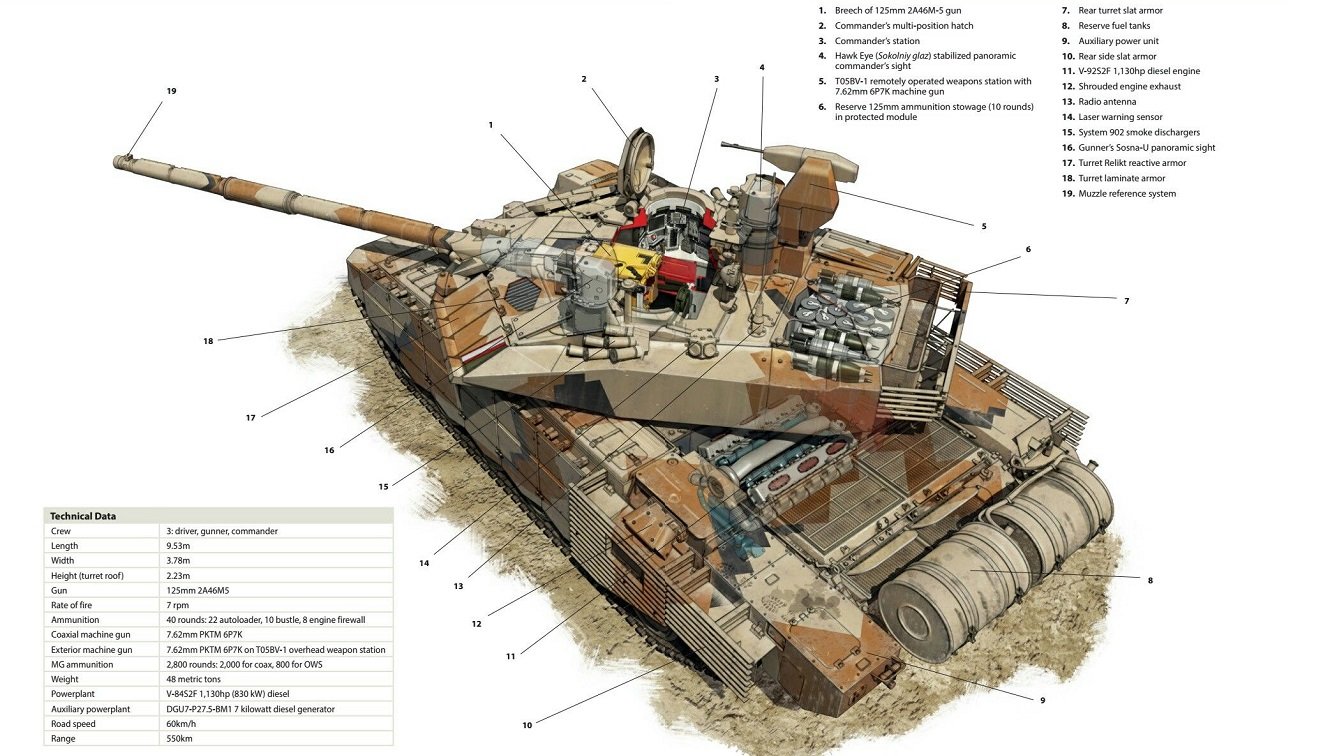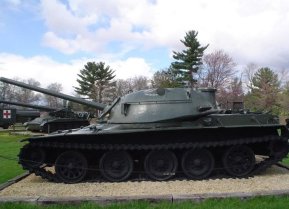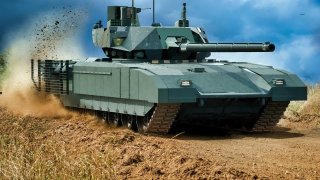Russia Seems to Have an Endless Supply of Tanks to Fight Ukraine
According to the latest intelligence update from the UK's Ministry of Defence, the Russian ground forces (RFG) may have lost as many as 2,600 main battle tanks (MBTs), along with another 4,900 armored combat vehicles (ACVs) in the ongoing fighting in Ukraine. However, the losses of such vehicles declined significantly last year, and a change in Russia's strategy may have been a major factor.
How many tanks does Russia have? During the Second World War, the Soviet Union was able to build an enormous number of tanks – replacing its losses faster than the Nazi invaders, which helped turn the tide of the war in the Soviet's favor. Now as Russia is the invader of Ukraine, it is losing significant numbers of tanks, yet is somehow managing to keep up with the losses.
According to the latest intelligence update from the UK's Ministry of Defence, the Russian ground forces (RFG) may have lost as many as 2,600 main battle tanks (MBTs), along with another 4,900 armored combat vehicles (ACVs) in the ongoing fighting in Ukraine. However, the losses of such vehicles declined significantly last year, and a change in Russia's strategy may have been a major factor.
"RGF probably lost around 40% fewer vehicles in 2023 than in 2022. It is highly likely that the reduction in armoured vehicle attrition rates was due to the increasingly positional nature of the conflict in 2023 and because Russia spent a significant proportion of the year in a defensive posture," the MoD announced via a post on X, the social media platform formerly known as Twitter.
Yet, since October of last year, RGF has likely still seen 365 MBTs and 700 ACVs destroyed while it made only minor territorial gains. What is now most worrisome for Kyiv is that Russia has shown an ability to maintain the number of tanks it can field despite the heavy losses.
"Russia can probably generate at least 100 main battle tanks a month and therefore retains the capacity to replace battlefield losses and continue this level of offensive activity for the foreseeable future," the update added.
Old Tanks from Russia – How Reliable?
The Kremlin has also taken hundreds of older MBTs – including T-62s from the Cold War – and sent them to the frontlines. The capabilities of those vehicles have been limited, and the old platforms have primarily been employed in defensive roles.
That partially explains why the RGF has been forced to switch to infantry-led attacks around Avdiivka to "conserve armored vehicles following the first two waves of assaults on the settlement," the Institute for the Study of War think tank reported last month.
Change of Tactics – Too Little, Too Late?
The Kremlin saw significant losses of tanks in the early phases of the war, likely the result of poor planning and organization failures. It could pay heavily beyond the loss of materiel.

Even as Moscow has been able to keep up the pace on replacement vehicles, it will face greater hurdles when it comes to the tank crews. With few experienced personnel to pass on their knowledge, the losses of tanks will likely continue.
Ukraine Has Had Fewer Losses
Kyiv's military has lost far fewer tanks and other vehicles than Russia, but it can't afford to take anywhere close to the losses that the Kremlin has seen in the nearly two years of fighting. With faltering Western support, Russia could soon have an advantage in numbers – even if Ukraine can keep all of its weapons working.

While many nations in Europe continue to send aid, Russia could soon have an advantage in any war of attrition, especially if the Kremlin's forces continue to replace its losses.
Author Experience and Expertise: Peter Suciu
Peter Suciu is a Michigan-based writer. He has contributed to more than four dozen magazines, newspapers, and websites with over 3,200 published pieces over a twenty-year career in journalism. He regularly writes about military hardware, firearms history, cybersecurity, politics, and international affairs. Peter is also a Contributing Writer for Forbes and Clearance Jobs. You can follow him on Twitter: @PeterSuciu. You can email the author: [email protected].
Main image is from Shutterstock. All other images are from Creative Commons.


